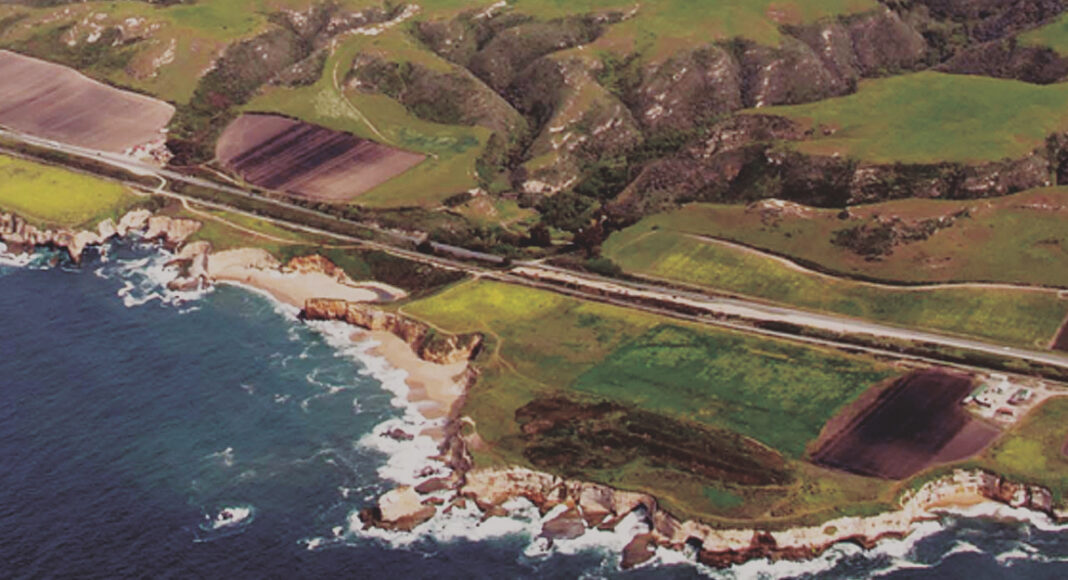A week before leaving office in January 2017, President Barack Obama designated Cotoni-Coast Dairies, a property on the north end of Santa Cruz County, as a national monument.
The designation, which was possible due to a campaign led by the Sempervirens Fund, brought with it not only federal recognition of the property’s unique ecology and cultural history, but also distinct conservation status.
And now, after a finalized management plan was released by the Bureau of Land Management (BLM) in late June, it is one step closer to being open to the public.
By early summer 2022, locals and visitors could finally have access to the property. Hikers, mountain bikers and horseback riders will be able to enjoy the region’s rolling hills, redwood groves, terraces bisected by streams, and sweeping views of the Pacific Ocean.
“We are very excited to move on to the next phase of this project,” says Ben Blom, field manager for the Central Coast Field Office of the BLM. “It was a long haul, with lots of public meetings, comments with stakeholders, partners … everyone under the sun. It’s incredible to see the level of interest and passion for the future of this place.”
In 2014, the Trust for Public Land gave the BLM 5,800 acres on the site after purchasing the property from Coast Dairies & Land Company in 1998. The Trust purchased the land to save it from developers who for decades had tried to convert it into luxury home developments and a power plant.
BLM has since worked with a number of agencies and organizations, and local communities in order to open the area to the public.
“The plan is to create a good balance of conservation and access,” Blom says. “And to be good neighbors to the folks most impacted. We can do it in a way that’s respectful to everyone.”
The idea of opening Cotoni-Coast Dairies to visitors has been controversial with local residents, who say they are worried about their sleepy seaside community being overrun by tourists and cars. Representatives of the Davenport North Coast Association expressed concerns early on about the lack of parking lots, trails, bathrooms and more.
Blom says that the BLM is committed to working with Davenport and Bonny Doon residents. They plan on providing the aforementioned resources, he says, and then some.
“We know they have concerns, and our plan can help with that,” he says. “We’ll provide parking, toilets, trash collection. We recognize there will be lots of visitors. We will work with them as best we can. It’ll be an ongoing thing.”
Half of the land will have no trails and limited access. BLM and its partners will manage resources, setting aside areas for scientific research and education purposes, as well as for local Indigenous tribes to carry out cultural practices.
The property was originally inhabited by the indigenous Cotoni (Cho-toe-knee), who were part of the greater Ohlone tribes of the Monterey Bay and San Francisco Bay regions. There are still ancestral sites on the property, and Blom says that preserving those sites and working with the Amah Mutsun Tribal Band is a major part of their plan.
“Our Native American partners have a long history with this place, so it’s very important,” Blom says. “We care very deeply about that.”
The management plan includes mitigating fire danger by keeping livestock, conducting prescribed burns, creating fuel breaks and removing non-native species—which will also lead to more restoration opportunities. The property is home to a number of critical wet areas which support sensitive species such the California red-legged frog.
“It’s just a fantastic, spectacular natural area, a beautiful property,” says Matt DeYoung, executive director of the Santa Cruz Mountain Trail Stewardship (SCMTS). “That’s the most exciting thing for me. There’s such a rich cultural and natural history out there. The trails are going to be a great way to highlight that.”
SCMTS has been heavily involved in the public planning process of the Dairies, which began in 2019. They took the lead on trail construction and implementation, planning to build the property’s entire network of trails. Currently, they are trying to raise $3 million, which will fund the entire first phase, which includes 17 miles of trails for bikes, pedestrians, equestrian and disabled access. SCMTS’ professional trail crew will lead the work, and there will be many opportunities for volunteer involvement, DeYoung says.
“It’s a big project,” he says. “We’re about a third of the way to our fundraising goal. We’ve got some grants and donations secured, and are hoping to close the gap soon.”
BLM’s partners also include the Amah Mutsun Land Trust, California Coastal Commission, California Department of Fish and Wildlife, CalFire, California State Parks, Caltrans, Davenport North Coast Association, Friends of the North Coast, Land Trust of Santa Cruz County, NOAA-National Marine Fisheries Service, Santa Cruz County, Santa Cruz Regional Transportation Commission, Sempervirens Fund and U.S. Fish and Wildlife Service.
“It takes a village to do these things,” DeYoung said. “There have been so many people who have been instrumental in making this happen.”
Learn more about the management plan at bit.ly/3ieo0xu.













